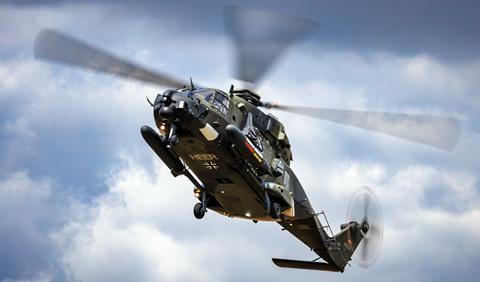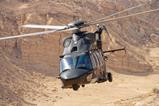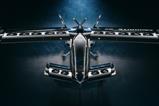Helicopter manufacturers are being challenged to “explore the art of the possible” in developing as many as six conceptual rotorcraft designs as part of a NATO-led initiative.
Under the Next Generation Rotorcraft Capability (NGRC) project, the alliance aims to deliver a replacement in the 2040s for the hundreds of current-generation medium-class helicopters that will be retired by its members over the coming decades.

An initial pair of concept studies have already been awarded to GE Aerospace and Lockheed Martin, to respectively examine novel powertrain solutions and an open systems architecture, but attention is now shifting to the platform as a whole.
On 2 February, the NATO Support & Procurement Agency (NSPA), which is managing the NGRC programme, launched a tender seeking three prime contractors to develop what it calls “Candidate Integrated Platform Concept(s)”.
“The study challenges industry to explore the ‘art of the possible’ in terms of emerging and future concepts and technologies that can meet the needs of the Next Generation Rotorcraft Capability, and to provide associated lifecycle cost estimates,” the document reveals.
Each successful bidder is free to propose two concepts, provided each is “fully analysed, described and documented to a comparable level of detail”, the NSPA says.
Studies should “identify [the] strengths, weaknesses, opportunities and threats of each concept and its component sub-concepts”, it adds.
Contractors will be “free to explore the full breadth of possible concepts” with “no constraints on the engineering principles applied”, the tender states.
While bidders are encouraged to examine the benefits of new or emerging technologies, the document notes that “exploiting or enhancing current-generation technologies may still generate innovation”.
“It is expected that the study shall consider and evaluate the risk/benefit balance between technology maturity levels accordingly.”
Lifecycle costs and integrated logistics support requirements should also be considered as part of the concept study work, the NSPA adds, alongside the benefits of digital design and next-generation manufacturing techniques.
Ultimately the studies will enable the six NATO members currently driving the NGRC project to determine the “possible future direction” of the programme and shape the “development of initial requirements for later stages”.
To date, France, Germany, Greece, Italy, the Netherlands and the UK are participating in the NGRC project, with Canada to be admitted shortly.
Despite the project being driven by European nations, the tender process is open to companies from any NATO member state, paving the way for US airframers Bell and Sikorsky to pitch versions of their respective tiltrotor and X2-based platforms.

Contracts, each worth up to €5.7 million ($6.1 million), are expected to be awarded in July, leading to the delivery of the concept studies in late 2025. Service entry of any eventual platform is envisaged around 2040.
Bidders are expected to base their proposals on a concept of operations, and an initial set of capability requirements outlined by the project in 2021 but subsequently refined.
These call for a rotorcraft with a maximum take-off weight in the 10-17t range that can lift a combined maximum load of more than 4,000kg (8,820lb), including over 3,000kg externally and above 2,500kg internally. The cabin should also have room for 12-16 fully combat-equipped troops.
Optimum cruise speed should be in excess of 220kt (410km/h) but “a cruise speed of less then 180kt is not acceptable”, the requirements document adds.
The rotorcraft should also be capable “extreme low-level” flight at mission cruise speed, it says.
It must also “be able to be remotely controlled by a control station and function as a UAS [uncrewed air system]”.
Although an initial requirements specification suggested each engine would need to produce around 3,000shp (2,240kW), that is now “dependent on the overall platform design architecture”.
The NSPA proposes a fly-away cost of no more than €35 million per aircraft, while costs per flight hour should be “optimally” €5,000 and no more than €10,000.
Documents released as part of the tender show the NSPA has made several assumptions around the overall duration and size of a future programme as part of its planning.
The total quantity of rotorcraft to be procured ranges from 200 to 800 – 500 is considered most likely – while the programme will last 70 years from service entry until the retirement of the last aircraft to be delivered.
Each airframe is expected to have a service life of 10,000-15,000 flight hours, averaging 300h per year.
A virtual conference for prospective competitors is scheduled for 15 February, while 26 April is the deadline for bid submissions.































